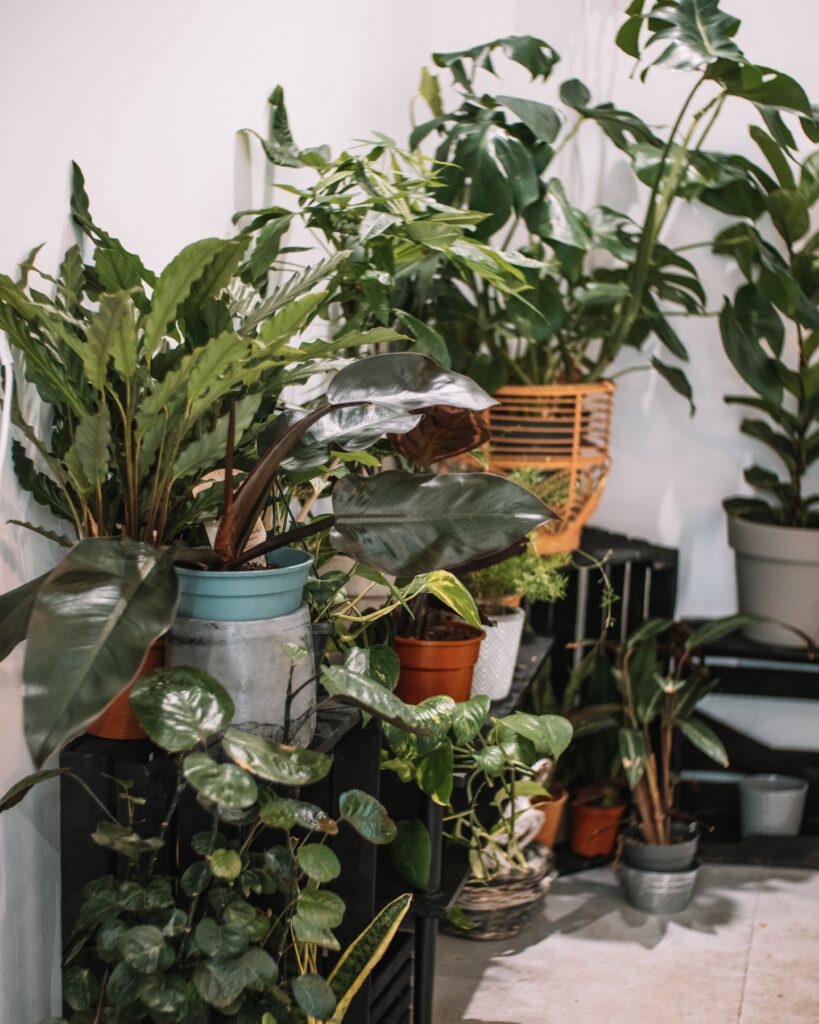Are you looking to transform your living room into a smart and automated space without breaking the bank? Look no further! In this article, we will explore the exciting world of DIY smart living room solutions. Discover how you can enhance your home entertainment system, control your lighting, and even automate your curtains with affordable and easy-to-install devices. Say hello to a more convenient, connected, and comfortable living room experience with these DIY solutions!

Smart Home Basics
Understanding smart home technology
Smart home technology refers to the integration of various devices and systems in your home that can be controlled and automated using a central hub or smartphone. With this technology, you can have more control over your home’s functionality and enhance your overall living experience. From lighting and audio to appliances and security, a smart home offers a range of benefits that can make your life easier and more convenient.
Benefits of a smart living room
A smart living room brings numerous advantages to your home. First and foremost, it offers convenience and ease of use. With smart devices, you can control the lighting, audio, and entertainment systems without having to get up from your seat. Imagine dimming the lights or changing the color of the bulbs with a simple voice command or swipe of your smartphone.
Moreover, a smart living room enables you to create a personalized ambiance. Whether you want a cozy and intimate setting for a romantic evening or a vibrant atmosphere for a party, smart lighting solutions allow you to adjust the brightness and color to suit your mood and occasion.
In addition to convenience and ambiance, smart living room technology also enhances energy efficiency. By leveraging features like dimming and automated schedules, you can reduce energy consumption and lower your utility bills. Smart appliances also play a role in this by optimizing energy usage and providing you with real-time data on energy consumption.
Smart Lighting Solutions
Types of smart bulbs available
When it comes to smart lighting solutions, there are various options available in the market. The most common type of smart bulb is the LED bulb, which offers energy efficiency and a longer lifespan compared to traditional incandescent bulbs. LED smart bulbs can be controlled wirelessly through a centralized hub or directly via a smartphone app.
Dimming and color options
One of the key features of smart lighting solutions is the ability to dim the lights. With dimmable smart bulbs, you can adjust the intensity of the light according to your preference, creating a cozy and relaxing atmosphere. Some smart bulbs also offer color options, allowing you to change the color of the light to match your mood or enhance the aesthetics of your living room.
Control options for smart lighting
Controlling your smart lighting can be done through various methods. Most smart lighting systems offer smartphone apps that allow you to adjust the settings from anywhere in your home. Additionally, voice control is becoming increasingly popular with the rise of virtual assistants like Amazon Alexa or Google Assistant. With a simple voice command, you can turn the lights on or off, dim them, or even change the color.

Smart Audio and Entertainment
Wireless speakers and sound systems
Wireless speakers and sound systems are essential components of a smart living room. These devices allow you to stream music wirelessly from your smartphone or other devices, providing high-quality audio throughout your living space. Whether you’re hosting a party or simply relaxing, wireless sound systems offer an immersive audio experience without the clutter of tangled wires.
Voice control and virtual assistants
Integrating your audio and entertainment devices with virtual assistants like Amazon Alexa or Google Assistant brings a whole new level of convenience to your smart living room. With voice commands, you can control your entire entertainment system, including playing music, adjusting the volume, or even switching between different streaming services.
Streaming services and smart TVs
Smart TVs are becoming increasingly popular in smart living rooms due to their ability to connect to the internet and stream content from various platforms. With a smart TV, you can access popular streaming services like Netflix, Hulu, or YouTube directly from your television, eliminating the need for additional devices like streaming sticks or set-top boxes. This seamless integration allows for easy navigation and a more enjoyable viewing experience.
Smart Furniture and Appliances
Smart furniture for convenience and comfort
Smart furniture offers innovative features that enhance convenience and comfort in your living room. For example, some sofas come with built-in USB ports and wireless charging pads, allowing you to charge your devices without the need for additional cables. Smart coffee tables can also provide wireless charging capabilities as well as built-in speakers for music playback.
Smart appliances for efficiency and control
Smart appliances, such as smart thermostats or smart plugs, not only make your living room more efficient but also give you greater control over your devices. With a smart thermostat, you can set schedules to optimize energy usage and maintain the perfect temperature in your living room. Smart plugs allow you to remotely control your appliances, such as turning off the TV or switching off standby power to save energy.

Home Security and Surveillance
Smart locks and digital security systems
Smart locks provide enhanced security to your living room by allowing you to lock and unlock your doors remotely using a smartphone app. Some smart locks even offer features like keyless entry, where you can unlock the door using a unique code or your fingerprint. Digital security systems also play a crucial role in safeguarding your living room by providing real-time monitoring and alerts in case of any unusual activities.
Smart cameras and monitoring
Smart cameras are an integral part of any smart home security system. These cameras allow you to monitor your living room and surrounding areas, both indoors and outdoors, from anywhere using your smartphone. Some smart cameras also offer advanced features like motion detection, facial recognition, and two-way audio, enabling you to communicate with visitors or deter potential intruders.
Integration and Compatibility
Choosing compatible smart devices
When building your smart living room, compatibility is crucial to ensure smooth integration and control of your devices. Before making any purchases, it is essential to research and choose smart devices that are compatible with each other and can be controlled through a centralized hub or smartphone app. Many manufacturers provide compatibility information on their websites or packaging, making it easier for you to select the right devices for your smart living room.
Smart assistants and central control hubs
To streamline and centralize control over your smart devices, a smart assistant or central control hub is highly recommended. These devices act as a command center for your smart living room, allowing you to control multiple devices simultaneously and using voice commands. Smart assistants like Amazon Alexa, Google Assistant, or Apple Siri integrate with a wide range of smart devices, providing you with a seamless and intuitive control experience.
DIY vs Professional Installation
Benefits and limitations of DIY installation
DIY installation of smart devices in your living room offers several benefits. Firstly, it allows you to save on installation costs by eliminating the need for professional assistance. DIY installation is often straightforward and user-friendly, with detailed instructions provided by manufacturers. It also gives you the flexibility to customize the placement and setup of your smart devices according to your preferences.
However, it’s important to consider the limitations of DIY installation. Some devices may require technical knowledge or tools that you may not have, which can result in installation issues or improper functionality. Additionally, DIY installation may not be suitable for complex systems or if you are not comfortable with handling electrical or technical tasks.
Considering professional assistance
When in doubt or if you require a more complex installation, opting for professional assistance is a wise choice. Professional installers have the expertise and experience to ensure that your smart devices are correctly installed and integrated into your living room. They can also provide valuable advice and recommendations based on your specific needs and requirements.
While professional installation may incur additional costs, it offers peace of mind and guarantees that your smart living room will function optimally. Professional installers can troubleshoot any issues that may arise during the installation process and ensure that the setup is secure and properly configured.
Costs and Budgeting
Determining your budget
Before diving into creating a smart living room, it’s important to determine your budget. Evaluate the costs of individual smart devices, installation, and any additional accessories you may need. Consider whether you’re willing to invest in higher-end devices or if you prefer more budget-friendly options. Having a clear budget in mind will help you prioritize your purchases and make informed decisions throughout the process.
Costs of individual smart devices
The costs of individual smart devices vary depending on the brand, features, and functionality. Simple smart bulbs can range from $10 to $30, while more advanced models with color-changing capabilities may cost upwards of $50. Smart speakers and sound systems can range from $50 to several hundred dollars, depending on the brand and audio quality. Smart TVs and appliances have a wide price range, depending on the size and features.
It’s important to consider the total cost of multiple devices and factor in any additional expenses, such as installation fees or compatibility hubs. Researching and comparing prices from different manufacturers will help you find the best deals and stay within your budget.
Long-term savings potential
While upfront costs can be a consideration when building a smart living room, it’s essential to evaluate the long-term savings potential. Smart devices, such as LED bulbs or energy-efficient appliances, can help reduce your energy consumption, resulting in lower utility bills over time. The ability to control and optimize your devices also eliminates unnecessary usage and ensures efficient operation.
Furthermore, some smart devices offer additional features like predictive energy usage or real-time monitoring of consumption, allowing you to identify areas where you can further save energy and costs. Considering the long-term savings potential is crucial to make an informed decision about the investment in smart living room technology.
DIY Smart Living Room Projects
Setting up a smart lighting system
Creating a DIY smart lighting system for your living room can be an exciting and rewarding project. Start by researching and purchasing compatible smart bulbs and a central hub or smart assistant. Follow the manufacturer’s instructions to set up the hub and connect the bulbs. Install the necessary smartphone apps to control the lighting system remotely. Experiment with dimming, color options, and scheduling to create the perfect ambiance for different occasions.
Creating a voice-controlled entertainment center
To create a voice-controlled entertainment center, start by selecting a smart TV that is compatible with your preferred virtual assistant. Connect the TV to your home Wi-Fi network and link it to your virtual assistant through the smartphone app. Set up other audio devices, such as wireless speakers or soundbars, to create a surround sound experience. Finally, use your virtual assistant to control the TV, adjust the volume, play music, or even switch between streaming services, all with simple voice commands.
Automating curtains or blinds
Automating curtains or blinds in your living room can add a touch of convenience and luxury. There are various smart curtain or blind control systems available, ranging from motorized rods to smart blinds that can be connected to your home automation hub. Installation processes may vary, so it’s important to follow the manufacturer’s instructions carefully. Configure the control settings to open or close the curtains or blinds automatically at specific times or through voice commands, creating a seamless and effortless experience.
Conclusion
Building a smart living room can transform your home into a modern, convenient, and efficient space. From smart lighting and audio systems to security and automation, the possibilities are vast. Whether you choose to opt for DIY installation or seek professional assistance, the benefits of a smart living room are undeniable. With careful planning, budgeting, and consideration of your specific needs, you can create a smart living room that caters to your lifestyle and enhances your day-to-day living experience. So why wait? Embrace the future of technology and start building your own smart living room today!
